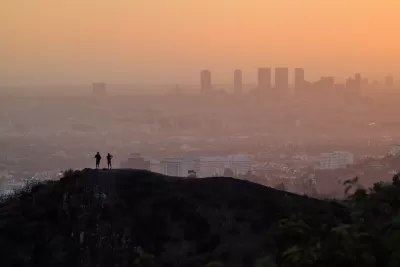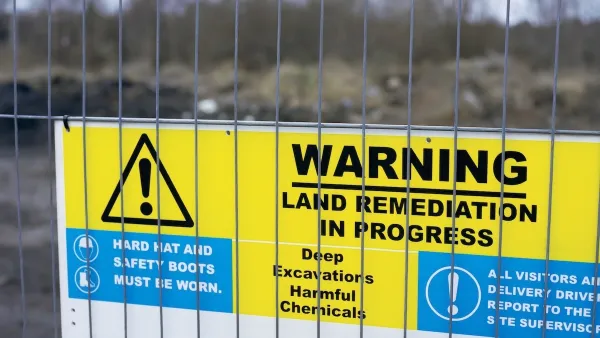UCLA released a report about how land use, biodiversity, and looming environmental threats affect the health and well-being of Los Angeles County residents.

C+.
That's the grade that Los Angeles County received from the "2021 Sustainable LA Grand Challenge Ecosystem Health Report Card" prepared by UCLA researchers and students. The report card takes a detailed look at the region's efforts to create a more resilient environment and community for people and wildlife. A healthy and improved ecosystem requires protecting and restoring high-quality habitats and native biodiversity; reducing ecosystem threats like wildfire and invasive species; and ensuring every Angeleno has access to nature and its benefits such as clean water, shade, and respite through policy solutions that address the region’s inequities.
To evaluate the region’s ecosystem health, 18 indicators were assessed across four categories:
- Land Use and Habitat Quality
- Biodiversity
- Threats to Ecosystem Health
- Community Health and Well-being
Many of the indicators are new areas of assessment for the report card and provide a more comprehensive view of current conditions compared to the 2015 Report Card. Grades were assigned in each category based on data availability and accuracy; compliance with regional policy targets, where applicable; and historical improvements. This year’s grades range from C/Incomplete to B. While there has been great progress in some areas, other areas still require significant improvement to raise the county’s C+ average.
FULL STORY: UCLA’s ecosystem health report card gives L.A. County a C+

Planetizen Federal Action Tracker
A weekly monitor of how Trump’s orders and actions are impacting planners and planning in America.

Maui's Vacation Rental Debate Turns Ugly
Verbal attacks, misinformation campaigns and fistfights plague a high-stakes debate to convert thousands of vacation rentals into long-term housing.

San Francisco Suspends Traffic Calming Amidst Record Deaths
Citing “a challenging fiscal landscape,” the city will cease the program on the heels of 42 traffic deaths, including 24 pedestrians.

Amtrak Rolls Out New Orleans to Alabama “Mardi Gras” Train
The new service will operate morning and evening departures between Mobile and New Orleans.

The Subversive Car-Free Guide to Trump's Great American Road Trip
Car-free ways to access Chicagoland’s best tourist attractions.

San Antonio and Austin are Fusing Into one Massive Megaregion
The region spanning the two central Texas cities is growing fast, posing challenges for local infrastructure and water supplies.
Urban Design for Planners 1: Software Tools
This six-course series explores essential urban design concepts using open source software and equips planners with the tools they need to participate fully in the urban design process.
Planning for Universal Design
Learn the tools for implementing Universal Design in planning regulations.
Heyer Gruel & Associates PA
JM Goldson LLC
Custer County Colorado
City of Camden Redevelopment Agency
City of Astoria
Transportation Research & Education Center (TREC) at Portland State University
Jefferson Parish Government
Camden Redevelopment Agency
City of Claremont





























